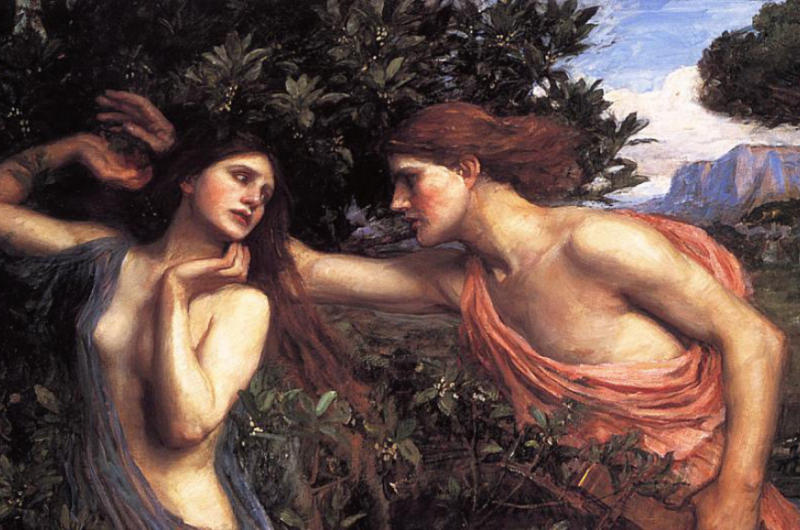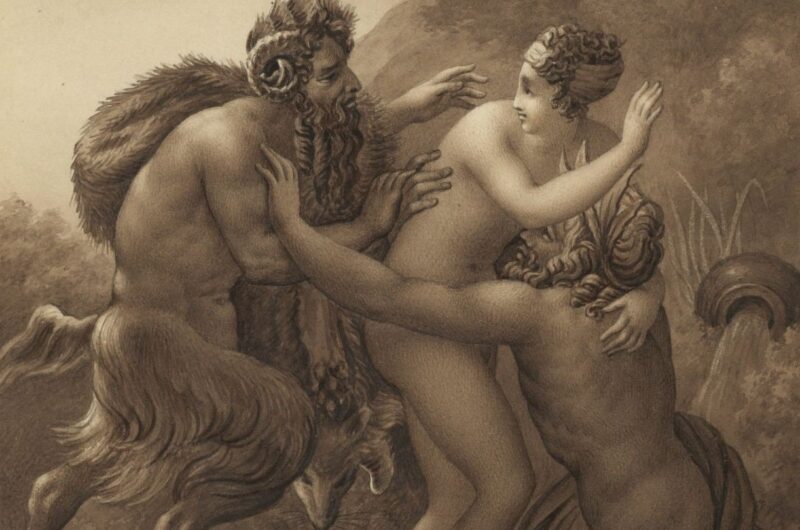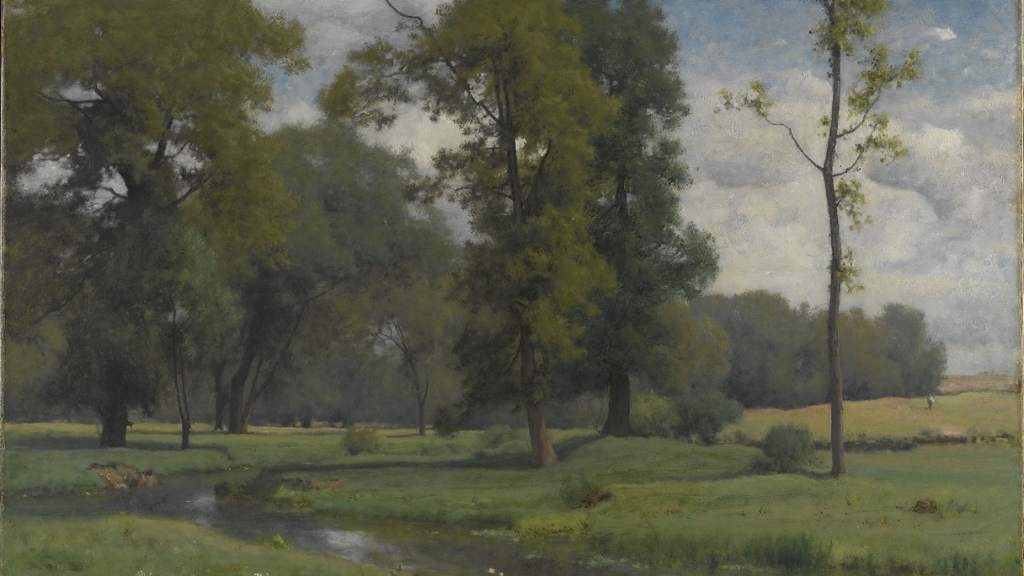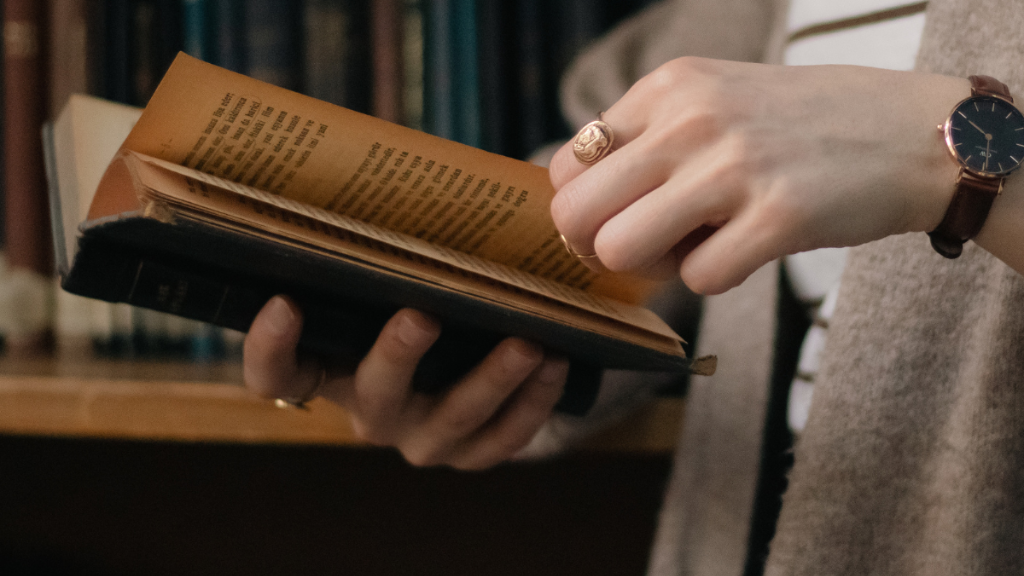Book One of Metamorphoses
Ovid’s Metamorphoses is a collection of Roman myths that describe the creation and development of the universe through frame narratives (stories within stories) and explains the role of the gods and humankind in developing legends and our way of life on earth. In Book One the narrator begins by describing the pure chaos of the universe. The god nature is said to have imposed order onto this chaos, which then resulted in the creation of the earth, humans, and other creatures. In this book, humans experience many different stages and moments of complete destruction before humanity finally settles. Once humanity settles into a sense of consistency, the narrator begins to tell stories about the gods, humans, and the many transformations that take place on the planet.
In this book we are told of a great flood, the creation of the treacherous python, and chaste maidens who are immortalized by their contact with the gods. This book leads cleanly into book two where we continue the story of Phaethon, a demigod and son of Helios, as he seeks out his father. Below we will explore the essential plot points of Book One, key themes and ideas, and notable figures who are present or invoked.
Creation
The first book of Ovid’s Metamorphoses begins with the creation of our universe. The narrator describes the universe as a “crude, unstructured mass”, pure chaos, until the god called nature works to untangle the different elements and impose order onto them (l. 7). Nature separated fire, air, earth, and water from each other before scattering them and tethering them to separate domains upon a sphere, the planet earth. Finally, from clay earth, man was created by Prometheus in a grand metamorphosis.

What are The Four Ages?
The earth was said to have experienced four ages, the Golden Age, The Silver Age, the Bronze Age, and the Iron Age. The Golden Age is described as an eternal spring when the needs of man were supplied naturally and bountifully by the earth. There were abundant resources, no need to till the land, and there was no war. The Silver Age launched the changing of the seasons and required man to build shelters to protect himself from the changing elements. Then came the Bronze Age, which was harsher than the others, but the harshest was the Iron Age dominated by “brute force and a criminal lust for possessions” (ll. 130-131). In the iron age, boundaries were put up all over earth, men began to dig in the earth and steal its riches, and the appearance of “Grim War” (l. 143) overtakes the planet. Man and woman alike lived consumed by theft and wickedness during this time.
Python
The gods invoke many great floods in Book One, some to punish humans for their wickless or arrogance, others to prevent them from being dethroned by beings like the giants. After the final flood in this book the world resettles and new creatures and humans begin to inhabit the earth. These humans would dig into the mud and find creatures that were not fully formed, with parts still appearing to be made of earth, and others that were strange and deformed. This is when the “monstrous python” (l. 639) is said to have manifested onto the planet. The python frightened and terrorized the new humans for some time until it was finally killed and vanquished by Apollo. This is the moment in Book One where the narrator begins to explore the different relationships between gods and humans, and the nature of different customs and symbolisms in the natural world.
Maidens
Three maidens who are prominently featured in book one are Daphne, Io, and Syrinx. Each of these maidens were pursued relentlessly by gods and their stories are immortalized due to the powerful nature of their experiences and transformations. As we continues through Metamorphoses, we will discover more stories surrounding the abuses and transformations of maidens as well as moments of mutual romantic love and revenge.

Daphne
Daphne was the daughter of a river god named Peneus. She was perused relentlessly by Apollo who had been struck by one of Cupids arrows. Daphne, who had been struck by an arrow that repelled love, fled from the god until she prayed for safety and was finally transformed into the first laurel tree. The laurel oak wreaths that are so often associated with Apollo owe to this moment.

Io
Io was the daughter of a river god, named Inachus, who was raped by Jupiter and transformed into a cow to hide her from Jupiter’s wife Juno. Io suffered greatly in her heifer form until Jupiter finally eased his wife’s jealousy and transformed Io back into a human. She is worshiped as the goddess Isis and later gave birth to a child by Jupiter named Epaphus.

Syrinx
Syrinx was a naiad who was well known for her beauty across Arcadia. She was perused relentlessly by the god Pan until she was finally transformed into river reeds in order to keep her from his grasp. Pan adored the sound of the reeds in the wind and transformed them into a new instrument, the pan pipes, to immortalize his love for the girl.
Notable Figures
Apollo – Apollo who is also called Phoebus is a sun god and the child of Latona and Jupiter. He is also known as the god of medicine, music, and poetry, and was the founder of the Pythian games after he vanquished the python from the earth. A well-known symbol associated with him, the laurel wreath, comes from the story in book one where he falls in love with a girl named Daphne who is ultimately transformed into a laurel tree. Apollo, so in love with the girl, cherishes these leaves and proclaims that they are a symbol of Greece, Rome, and their leaders.
Diana – Diana is another child of Latona and Jupiter who is invoked frequently throughout this section and often associated with the maidens we see perused and transformed. Some of the notable tropes associated with Diana thus far include virtue and chastity, affiliations with nature, the hunt, and female autonomy. Three figures who were transformed in this section, Daphne, Io, and Syrinx either modeled themselves after the goddess or were directly compared to her by the narrator. In the coming books we will see more maidens who are compared to or watched over by Diana.
Conclusion
Book one of Metamorphoses starts readers off with intense creation stories, relationships, and foundations that will impact other parts of the text. As the story continues, we will follow Helios’ son Phaethon as he seeks out his father. We will continue to see frame narratives in book two, introductions to other Roman gods and notable figures, and explore other well-known Roman myths.


